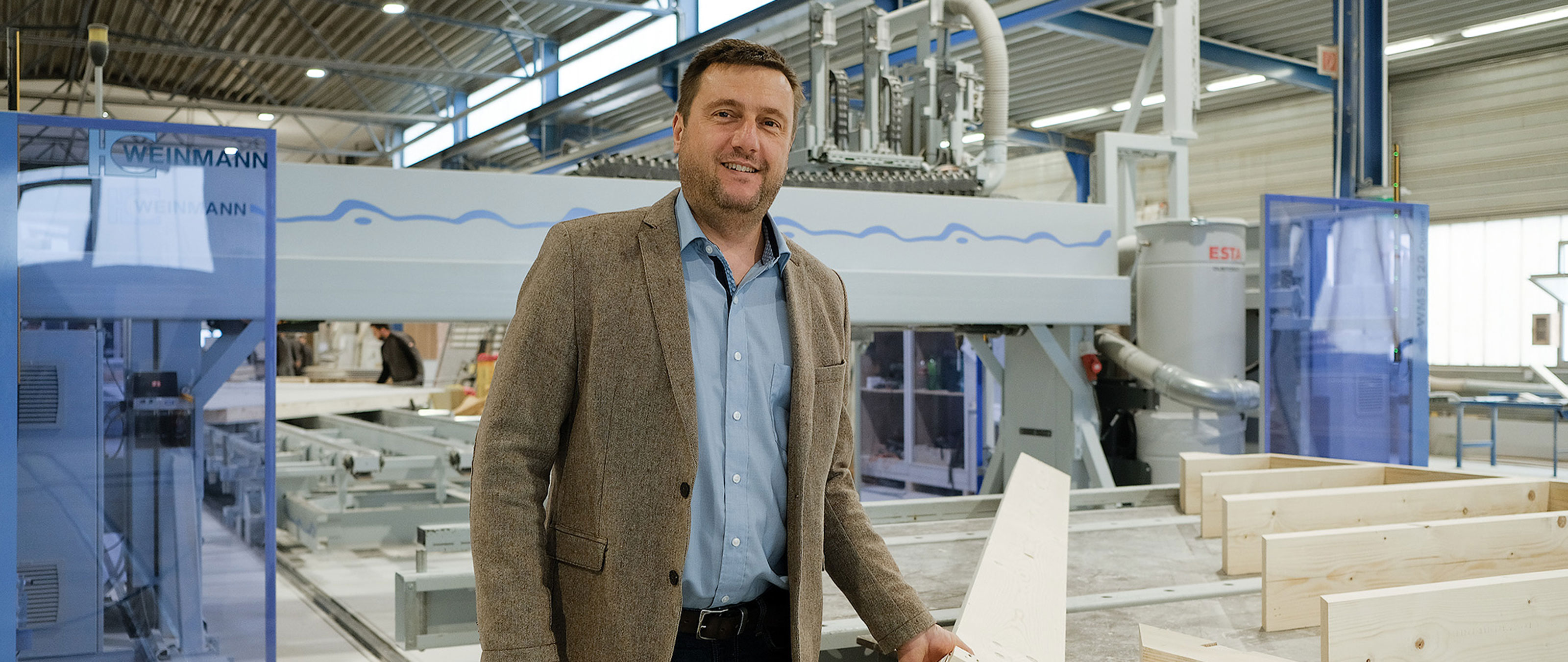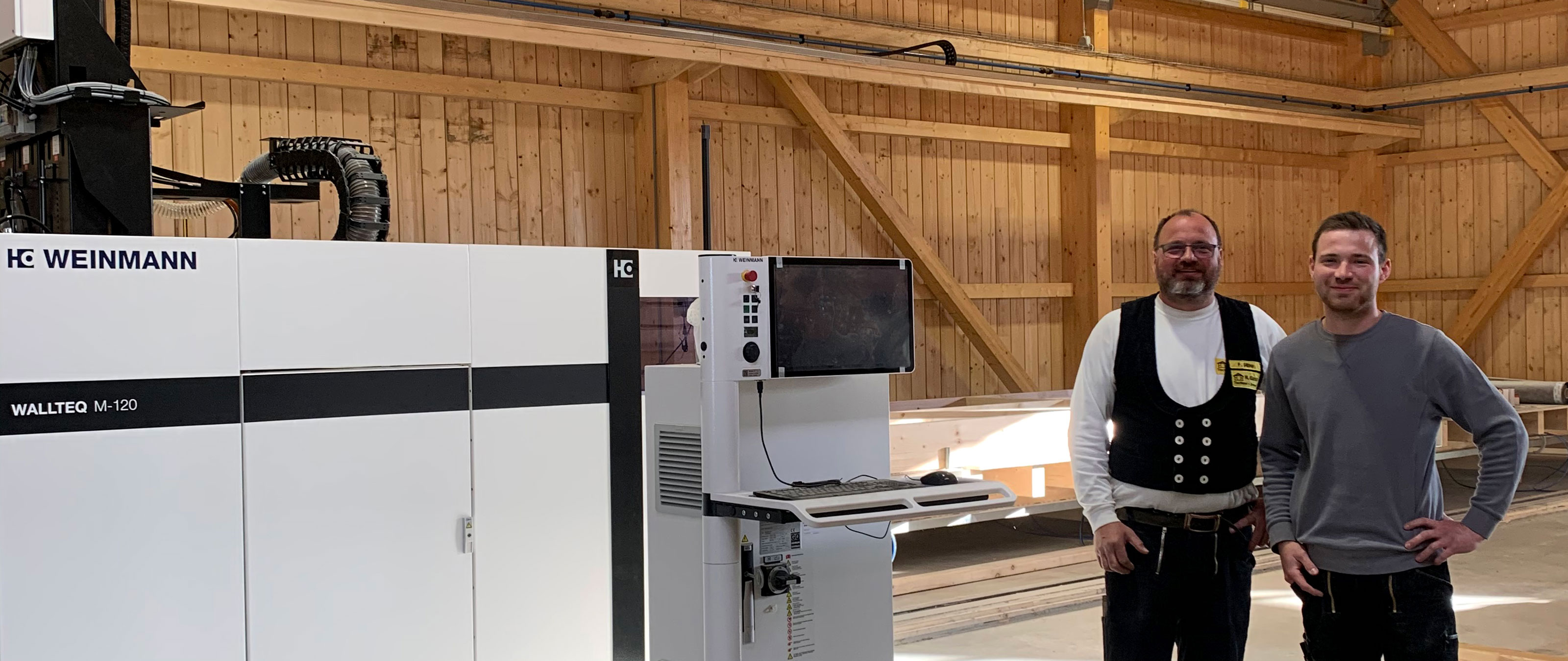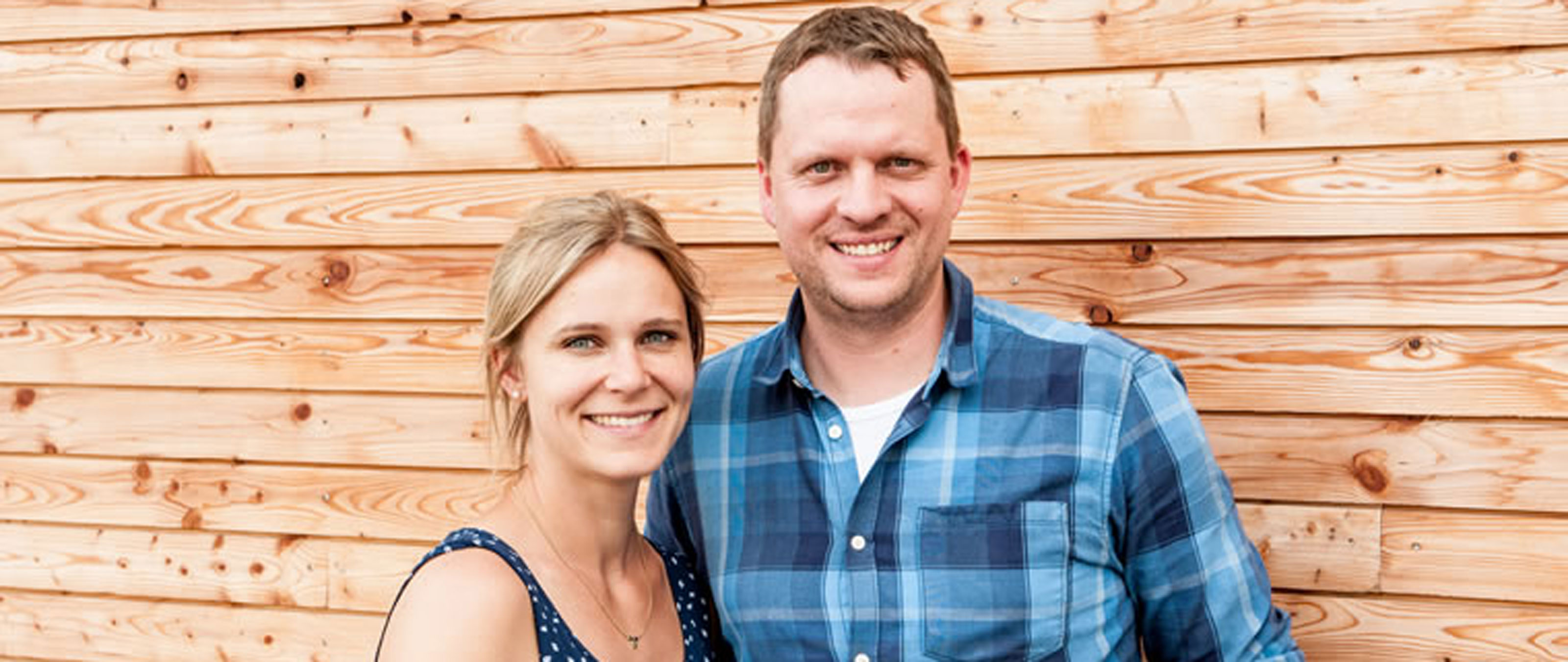
Founded in 1991 by Holger Höfle as a one-man operation, over the last 30 years the woodworking shop has developed into a modern timber construction company that today, employs around 30 people. Two daughters of the Höfle family also work in the family-run business, as a carpenter's assistant and project manager. In 2015, Höfle moved the company site to Thaining and the new 1200 m² operating premises where today, the production area, showrooms, warehouse and office are all together in one modern building. In addition to classic carpentry activities, the company is also active in the fields of turnkey timber house construction, timber construction engineering and the construction of apartment buildings and agricultural buildings. Its main field of business is timber house construction, although the construction of residential units and multi-story buildings is making up an ever-increasing share of business. Every year, Zimmerei Höfle produces between 25 and 35 residential units.
Individual prefabrication
Höfle has focused strongly on a high level of prefabrication ever since the company was founded. In doing so, the company always looks at the complete process, starting with planning, through production and right up to handing the keys over to the developers. 98% of all projects are delivered as turnkey projects. With the investment in the WALLTEQ M-120 multifunction bridge from WEINMANN and the two carpentry tables, Zimmerei Höfle has taken a further step toward prefabrication. For Stefanie and Holger Höfle, who manage the company together, it was clear that they initially wanted to start with a smaller solution that could be expanded at a later point in time. For Zimmerei Höfle, the multifunction bridge came at exactly the right time, because this machine allows the company to begin the process of automation exactly as envisioned. "A small, economic solution that also allows us to adapt the associated processes, such as work preparation and handling, to the technology step-by-step," explains Stefanie Höfle-Müller. For her, one big benefit of automation is in the high added value: "We produce the complete elements, with all panel layers, in the hall. Previously, we used to subcontract this work to drywall construction companies. Now, thanks to the new machine, we can do this in the hall. We thereby save up to three weeks on the construction site." When they leave production, the finished elements have been fully processed with all windows, window sills and base details. The empty pipes for the electrics and ventilation have also been installed and the shell attached.
Optimized work processes and improved work ergonomics
One important focus of the investment was also on optimizing working conditions, explains Stefanie Höfle: "It's important to us to offer our employees a good and ergonomic workplace. Even when the hall was constructed, we made sure that it offers a comfortable working environment with sufficient light. The employees can even work in a t-shirt in winter, as the entire hall is equipped with underfloor heating. We want to offer our employees an ergonomic workplace." Therefore, as well as investing in system technology, the company also invested in two vacuum lifts, a new overhead crane and an additional cross rail, thus optimizing the entire process, including the material logistics. The machine and the suction solution have brought about a significant improvement in the level of dust. Whereas previously, the entire hall was full of dust, today, hardly any dust can be seen during panel processing. Veronika Höfle, a newly trained carpenter's assistant, is impressed: "The multifunction bridge is a great support; it optimizes our work processes, reduces the amount of physical work we have to do and reduces the level of dust in the production hall."
The WALLTEQ M-120 is combined with two carpentry tables as well as a separate work table for creating the frame works. Using the overhead crane, the assembled frame work is placed on the first carpentry table. The panel material is positioned on trolleys at the side of the hall and from there, picked up by the vacuum lifts and placed on the frame work and then secured and processed with the WALLTEQ M-120. The two carpentry tables turn the element by setting themselves up opposite each other and turning the element onto the second side. Holger Höfle placed significant importance on this turning operation: "Due to our high production depth, it's extremely important for us to have an undamaged component and that only works with the automatic turning operation. The main advantage of this is not only the speed but also work safety. That was the decisive point for us."
One system for all elements
After one year things have changed in production, both in the work preparation, production and the entire logistics. This is above all visible in the workflow because the system technology selected allows Höfle to work on all three work tables in parallel. Holger Höfle is very happy with the new work process: "The production flow is more integrated and offers maximum flexibility, including with regard to the use of the hall area."
For Zimmerei Höfle, flexibility in production was very important because all detached houses are planned freely. The proportion of special construction is around 80%. Through the development of standard details, the aim was to reduce the proportion of special elements and increase the productivity in production. This goal has been reached; today, the entire production chain runs 100% on the machine, including roof elements. Holger Höfle: "We make full use of the flexibility that the machine offers. We use the multifunction bridge to produce even the smallest components, dormers and complicated roof cuts."
The goals and expectations specified for the new machine have been fulfilled, reports Holger Höfle: "We are very happy with the WALLTEQ M-120 as an entry-level variant. WEINMANN forecast a performance increase of 30% and this is what we have achieved. I would make exactly the same decision again. It's just a joy to see how the system works."
For Holger Höfle, the decision to automate step-by-step is still the correct one in hindsight: "It allowed us to adapt our processes and our employees have been able to learn how to handle that. It's important to automate step by step and consider the accompanying processes, such as work preparation and handling, carefully."
In deciding to automate, Zimmerei Höfle always has an eye on the long-term development of the company. This is also the advice that Holger Höfle gives to other companies that are looking at automation, "it's important to think about how you want to development in the long term as well. That's the only way the system can be planned to allow future requirements to be implemented easily." As the automation has proven to be very good and demand offers a good outlook, the company is already thinking about the next step. Stefanie Höfle: "In the future, we want to work with the larger model — the WALLTEQ M-380 insuFill. One the one hand, this offers more opportunities in processing and also delivers a higher performance. On the other hand, it also allows us to insert the insulating material fully automatically."
Videos
Please confirm that when you use YouTube, data such as your IP address, browser identifier and similar may be transmitted to Google.
» Privacy Policy
The carpentry Höfle enters the automated timber frame construction.
“A small, economic solution that also allows us to adapt the associated processes, such as work preparation and handling, to the technology step-by-step.”Stefanie Höfle-Müller, managing director Zimmerei Höfle
Zimmerei Höfle
Founded in 1991 by Holger Höfle as a one-man business, the craft enterprise has developed into a modern timber construction company over the last 30 years and today employs around 30 people. In 2015 Höfle moved the company's location to the new 1,200 m² premises in Thaining.
Website













